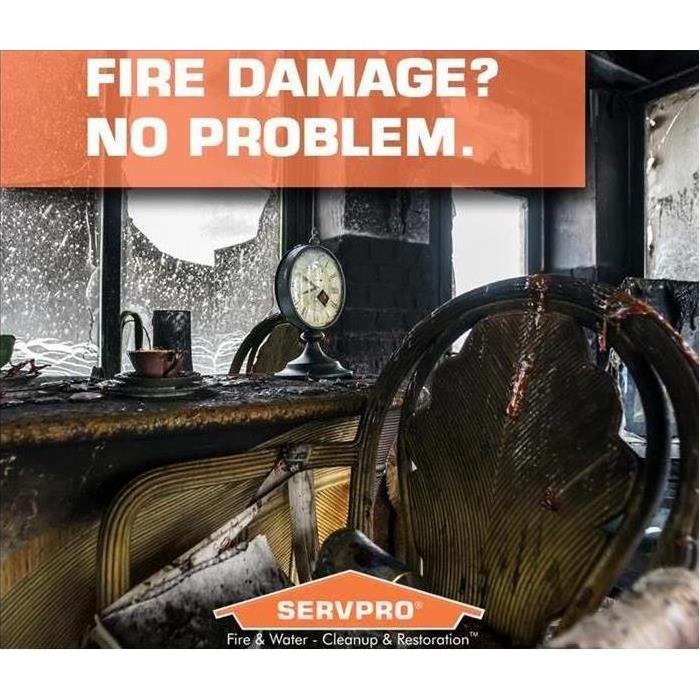Different types of Fire Damage, Different Ways SERVPRO can restore / clean
12/26/2020 (Permalink)
 SERVPRO of Greater St Augustine / St Augustine Beach is your local fire / smoke / soot damage restoration and cleanup professionals! 904 429 4457
SERVPRO of Greater St Augustine / St Augustine Beach is your local fire / smoke / soot damage restoration and cleanup professionals! 904 429 4457
Fire Damage Restoration includes the removal of soot residues from various surfaces and materials. Not all soot is the same, meaning there are many various techniques and ways to restore / clean the different types.
Let's take a moment to consider the elements of a fire. When combustion takes place, the material that is on fire is being broken down and combining with oxygen as heat from the flame is given off. Fires that give off smoke produce smoke-filled residues and soot.
Smoke is released into the air as burning materials decompose, in the form of suspended particles, gases, and aerosols.
Gases are invisible components of smoke. Gases from a fire can be extremely dangerous if inhaled, such as sulfur dioxide, carbon monoxide and hydrogen cyanide. This is why its so important to vacate the property as soon as possible to a safe area far away from the fire.
In addition, smoke also consists of small particles of matter and aerosols. These particles within smoke are odor absorbing, which is what gives soot it's smell.
Smoke particles from an "incomplete" combustion can contain carcinogenics. If you ever near an active fire, get low to the ground to avoid inhaling the rising smoke-filled air.
Once smoke settles on surfaces as a residue, it is often referred to as "soot."
Soot residues are all different and can contain different types of acids since chlorides and sulfides in smoke mix with the humidity in the air or with other forms of moisture that may be present to form acids.
Acidic soot can result in discoloration and corrosion if they remain on materials for too long.
As mentioned, not all smoke residues are the same. The 4 most common types of soot are;
Dry smoke residues, Wet smoke residues, Protein smoke residues and Fuel smoke residues. Different cleaning and restoration methods may be applied to remove and restore different types of residues.
Cleaning dry smoke residues
Dry smoke residues are generally the "easiest" of the 4 most common residues to clean, thanks to it carrying only few aerosols and deposits of small, dry particles onto surfaces. Dry smoke residues don't stain surfaces as quickly or as deeply as wet smoke residues.
Cleaning wet smoke residues
Wet Smoke residues are much more difficult to remove than dry smoke residue. Wet smoke typically contains a high proportion of aerosols such as varnishes, solvents and other liquid components. Wet smoke residues seep deeper into surfaces than dry smoke residue does. Within minutes; hot, oily residues will discolor plastic materials.
Protein Residues
Kitchen fires often contain the burning of meat, poultry, etc. resulting in protein residues. Protein residues can occur in many different colors or forms. Protein residues can be yellow in color, amber, or they can be almost impossible to see!
Fuel Oil Soot
Furnace puff-backs, common in the North East, occur when an oil burner malfunctions and ignites suddenly. Soot from puff-backs consist of dust particles from the ductwork and fuel oil that didn't properly burn.
During a fire, soot and smoke particles settle on and adhere to surfaces. Restoration means the removal and cleaning of these soot residues. Rely on your local professionals at SERVPRO of Greater St Augustine / St Augustine Beach to provide you with the best fire damage restoration service available. Available 24/7/365 at (904) 429-4457






 24/7 Emergency Service
24/7 Emergency Service